Persons, Collections and Topics
The Hunt Institute is committed to making its collections accessible for research. To that end, we are digitizing as staff time, item condition and copyright law permit. We are pleased to offer descriptions of and in some cases digitized versions of the following individual artist and special botanical collections from the Art Department.
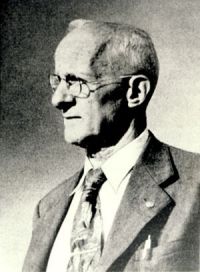
Allard
The Art Department has 365 ink drawings by Harry Ardell Allard, which seem to be associated with the flora of Virginia and West Virginia about which he wrote some 55 of his 254 papers. Allard (1880–1963) was born in Oxford, Massachusetts. He graduated with a B.S. in botany and geology from the University of North Carolina in 1905. In 1906 he began his 40-year career at the United States Department of Agriculture, retiring in 1946. He is also known for his co-discovery with Dr. W. W. Garner (1875–1956) of photoperiodism, his fundamental work on tobacco mosaic and plant breeding, his collections of lichens and flowering plants and his pioneer observations on the stridulation of insects.
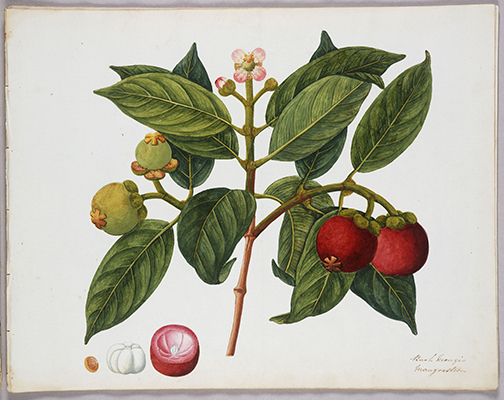
Balestier album of Malaysian plants
In May 2021 the Art Department received an album of 72 watercolors of Malaysian tropical fruits, flowers and plants of economic importance that were painted (?1837–1851) by unknown artists of Malaysian or Chinese descent. The album was originally owned by Joseph Balestier (1788–1858), first U.S. Consul to Singapore (confirmed 4 July 1836–official resignation 21 January 1852), and consequently by the descendants of his half-brother Joseph Nerée Balestier (1814–1888). Accompanying the album was a calling card of Mrs. Henry Wolcott Balestier (a great niece-in-law through marriage) with the handwritten notation "Book was drawn and painted by free hand native of East India about 85 years. 1924." Since the album's paper is watermarked Whatman 1837, we may surmise that the images were painted on or after that year and before Joseph Balestier's departure from Singapore in 1851. The album was delivered by friends of Sara Lawrence, executor of the Richard John Naskali estate, which stipulated that it be donated to the Hunt Institute. In 2002 Naskali (1935–2018) purchased it from a Balestier descendent living in Idaho, and the album remained a prized possession until his death. Many of the Malaysian plant names written on the bottom of each watercolor were verified by Muralithran G. Kutty, a Malaysian graduate student in Material Science Engineering at the University of Idaho on 8 October 2001. Naskali verified the binomials. Between 2005 and 2006, the album was conserved and rebound by Holly Moore, Lloyd E. Cotsen Head of Conservation, and photographed by John Sullivan, Head of Imaging Services, Huntington Library, Art Museum and Botanical Gardens, San Marino, California.
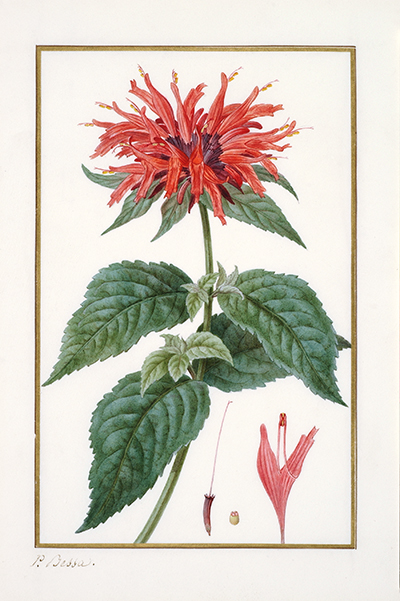
Bessa
The Art Department has 47 artworks by Pancrace Bessa (1772–1846), including 2 charcoal sketches, 6 watercolor paintings and 39 engravings. The 6 watercolors were created for Jean Claude Michel Mordant de Launay (1750–1816) and Jean Louis Auguste Loiseleur-Deslongchamps (1775–1849), Herbier Général de l'Amateur (Paris, Audot, [1810–]1816–1827).
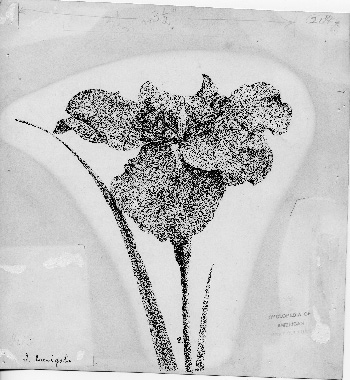
Davis
The Art Department has 158 pen-and-ink drawings by Fannie (also Fanny) Elisabeth Waugh Davis but very little information about the artist. Davis (1871–1958) was born in Sheboygan Falls, Wisconsin. She received a B.S. in 1891 and an M.A. in 1896 from Kansas State Agricultural College (now Kansas State University). She later married Kary Cadmus Davis. She worked mainly in pen-and-ink and pencil but did some watercolors. Her work was reproduced in Liberty Hyde Bailey (1858–1954), Cyclopedia of American Horticulture (New York, Doubleday, Page & Co., 1900) and various agricultural books published by J. B. Lippincott Company between 1913 and 1930. In Bailey's Cyclopedia she signed her work "Fannie" and "Fanny."

Dowden
The life and work of this treasured American botanical artist continues to inspire artists working in this genre. Anne Ophelia Todd Dowden (1907–2007) extensively researched and then wrote, illustrated and designed 9 books and 5 magazine articles and illustrated 9 books and 9 articles by other authors (see bibliography) on plant themes. She had a passion for understanding the interdependency of plants and their pollinators, and she considered it her greatest mission to educate young readers about nature. The Hunt Institute included her work in several exhibitions, including the retrospective A Blossom on the Bough (2002), and is the repository of the most extensive collection of Dowden original watercolors and ink drawings (438), research drawings, publication layouts and correspondence through a gift from the artist.
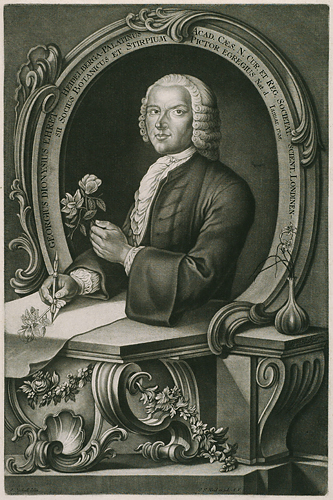
Ehret
The Art Department has 227 gouache paintings, 9 engravings and 1 etching by Georg Dionys Ehret (1708–1770). Six of our Ehret paintings were published—five in Christoph Jacob Trew (1695–1769), Plantae Selectae (Nuremburg, 1750–1773), and one in Aylmer Bourke Lambert (1761–1842), A Description of the Genus Pinus (London, 1803–1824, vol. 1).
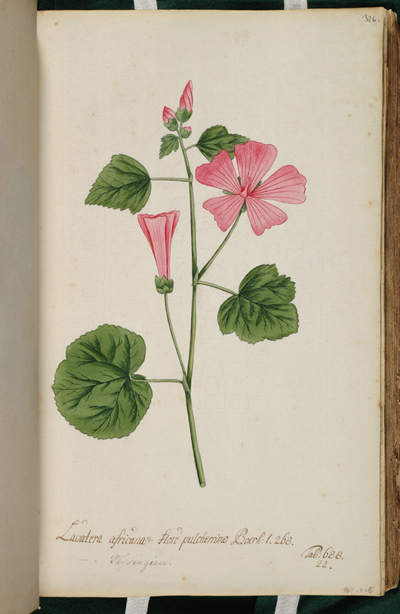
Happe
The Art Department has an album of 471 watercolors depicting plants by the Berlin apothecary and artist Andreas Friedrich Happe (1733–1802) that was assembled about the year 1780. On the fly-leaf is the autograph signature of a former owner, Anna Kessler, in the 19th century. Each plant has been labeled, probably by Happe, in polynomials, largely from Tournefort, and often later in Linnaean polynomials and binomials. The subjects include over thirty cryptogams, mostly ferns and fungi, and there are about six each of Gentiana Linnaeus, Geranium Linnaeus, Papaver Linnaeus, Saxifraga Linnaeus, Veronica Linnaeus, Prunus Linnaeus, Ranunculus Linnaeus, Rumex Linnaeus and Solanum Linnaeus.
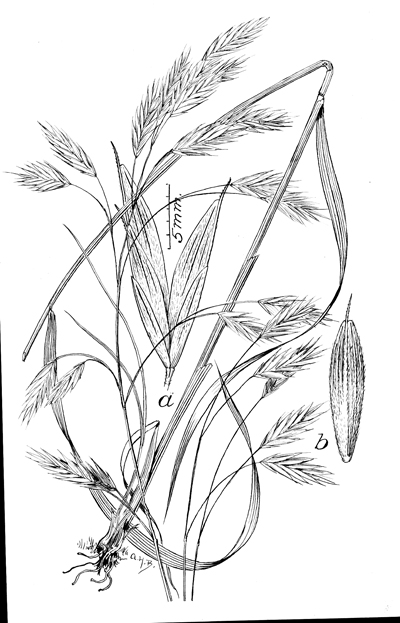
Hitchcock-Chase
The Hitchcock-Chase Collection of Grass Drawings consists of 2,713 drawings (mostly ink, but some pencil) of grasses, representing hundreds of genera, assembled by Smithsonian Institution agrostologists Albert Spear Hitchcock (1865–1935) and Mary Agnes Chase (1869–1963). Curated by the Art Department, the collection is on indefinite loan to Hunt Institute from the Smithsonian and is, to our knowledge, the only such collection of grass illustrations. Some of the illustrations in this collection were reproduced in Hitchcock's Manual of the Grasses of the United States (1935, 1950 with Chase), Manual of the Grasses of the West Indies (1936) and "North American species of Agrostis" (1905); in Chase's "The North American species of Paspalum" (1929); in Frank Lamson-Scribner's "American grasses (illustrated)" (1897); and in Jason R. Swallen's The Grasses of British Honduras and the Petén, Guatemala (1936). The Hitchcock-Chase Collection features botanical illustrations by Chase, Hitchcock, A. H. Baldwin, (Miss) M. D. Baker, Mary Wright Gill, Frank Lamson-Scribner (1851–1938), Theodore Holm, Leta Hughey, Benjamin Y. Morrison (1891–1966), Mrs. George M. Mullett, W. R. Scholl, Frances Carnes Weintraub, Edna May Whitehorn and unidentified artists.
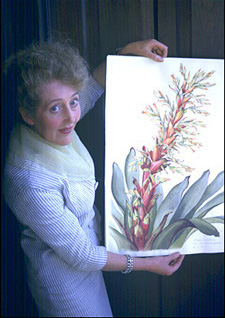
Mee
Margaret Ursula Mee (1909–1988) was born in Chesham, Buckinghamshire, England. She studied art in London at St. Martin's School of Art, Center School of Art and Camberwell School of Art. She received a national diploma in painting and design in 1950. In 1952 she moved to Brazil with her second husband, Greville Mee, and taught art for five years in São Paulo's British school. She began working as a botanical artist at the Instituto de Botanica in São Paulo. She explored the Brazilian jungles on numerous expeditions between 1958 and 1964 before concentrating on the Amazonas from 1964 to 1988. She collected plants and painted others on-the-spot. Her three best-known publications are Flowers of the Brazilian Forests (1968), Flowers of the Amazon (1980) and In Search of Flowers of the Amazon Forest (1988). When Mee died in a car crash in England in 1988, she left behind 400 folios of gouache illustrations, 40 sketchbooks and 15 diaries. The Margaret Mee Amazon Trust was founded in 1988 to preserve her legacy. The trust is dedicated to further education and research in Amazonian plant life and conservation. To this end the trust provides scholarships for Brazilian botanical students and plant illustrators to study in the United Kingdom or conduct field research in Brazil.
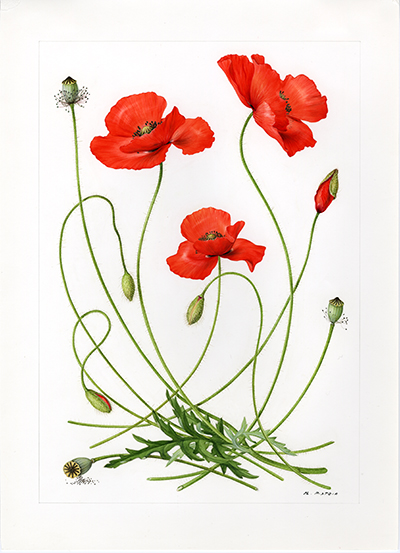
Pistoia
The Art Department has 232 watercolor paintings by Marilena Pistoia (1933–2017). Of these, 99 were published in Francesco Bianchini and Francesco Corbetta, I Frutti della Terra (The complete book of fruits and vegetables); 52 were published in their Le Piante della Salute (Health plants of the world: Atlas of medicinal plants); and 80 were published in Laura Peroni, Il Linguaggio dei Fiori (The language of flowers), all published in Italy by Arnoldo Mondadori between 1973 and 1984 and subsequently in America by Crown and by Newsweek. The artist donated all the original paintings for these books to the Institute. An additional painting of onions was commissioned by the Institute for inclusion in the 4th International Exhibition of Botanical Art & Illustration in 1976.

Redouté
The Art Department has 143 artworks by Pierre-Joseph Redouté (1759–1840), including line and stipple engravings, pencil drawings and watercolor paintings. Several of these artworks were published in his Les Liliacées (Paris, Didot, 1802–1808[–1816]) and Choix des Plus Belles Fleurs et des Plus Beaux Fruits (Paris, Panckoucke, 1827–1833) and his and Claude-Antoine Thory's Les Roses (Paris, Didot, 1817–1824).
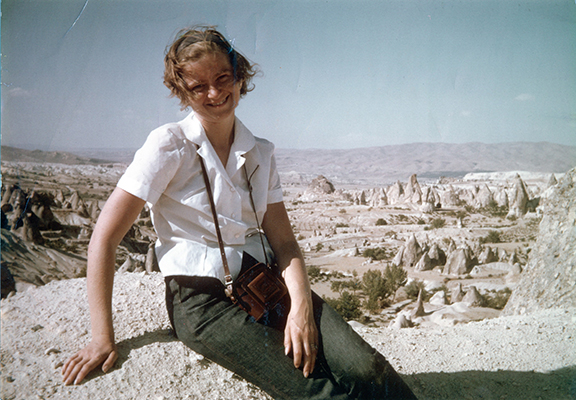
Rennie
The Art Department has 115 artworks created by Patricia Margaret Calhoun (Watson) Rennie (1931–), including four watercolor paintings that were included in our Contemporary Botanical Art and Illustration (1st International) in 1964 (and signed Patricia Watson). In 2022 Rennie donated 127 artworks, preparatory sketches and field drawings.

Smith
The Art Department has 509 ink drawings mostly for Gilbert M. Smith's Cryptogamic Botany: Volume I, Algae and Fungi, ed. 1 (New York and London, 1938) and Cryptogamic Botany: Volume II, Bryophytes and Pteridophytes, ed. 2 (New York, Toronto and London, 1955). None of the drawings is signed, but the prefaces to the two volumes give credits to the author, Mrs. Carl F. Janish, Mrs. Fred Addicott and Maximo V. Rodrigo. Gilbert Morgan Smith (1885–1959) was born in Beloit, Wisconsin. He graduated from Beloit College in 1907 and received a Ph.D. from the University of Wisconsin in 1913. He began his career at the University of Wisconsin as an instructor in the Botany Department in 1912 and left at the rank of associate professor in 1925. He then moved to Stanford University where he was a professor of botany until he retired in 1950. He collected and studied fresh-water algae in Wisconsin and later published The Fresh-Water Algae of the United States in 1933. The first edition of the two-volume Cryptogamic Botany appeared in 1939. In California he studied marine algae and published Marine Algae of the Monterey Peninsula, California in 1944. He published some 60 papers and books during his career.
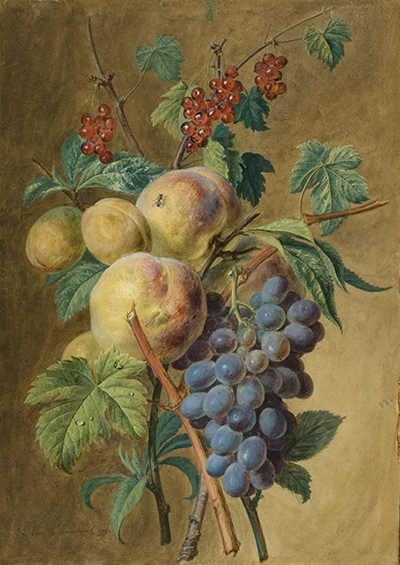
Spaendonck
The Art Department holds 17 artworks by Gérard van Spaendonck (1746–1822), including 16 engravings for his Fleurs Dessinées d'après Nature (Paris, l'Auteur, au Jardin des Plantes, 1801) and one gouache painting.
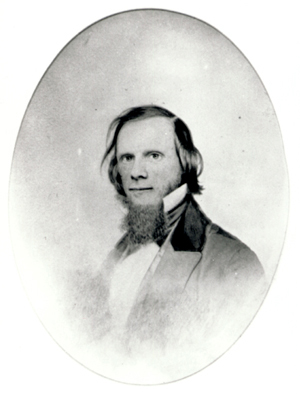
Sprague
The Art Department has 487 drawings, watercolors and lithographs from originals by Isaac Sprague (1811–1895).
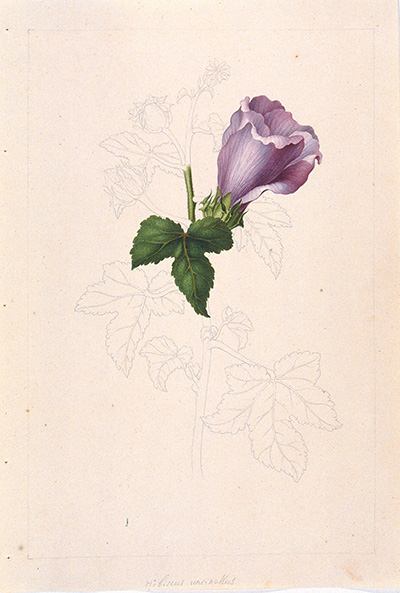
Torner
The Torner Collection of Sessé and Mociño Biological Illustrations is the original collection of botanical and zoological illustrations made during the Spanish exploring expedition of 1787–1803 sent to New Spain under the command of Martin de Sessé y Lacasta (1751–1808) and José Mariano Mociño (1757–1820). The Sessé and Mociño expedition, as it is commonly called, explored extensively in the Caribbean, Mexico and northern Central America, with forays also in Baja and Alta California and as far north as Nootka and Alaska. The drawings were executed by a number of artists including Juan de Dios Vicente de la Cerda (fl.1787–1803), Atanasio Echeverría y Godoy (fl.1787–1803), Jose Guio (fl.1787–1803) and Pedro Oliver (fl.1787–1803). The collection comprises approximately 2,000 watercolor drawings and sketches; about 1,800 are of botanical subjects and the remainder are of various animal species (fish, birds, insects, reptiles and small mammals). In 1981 it was purchased for the Institute's permanent collection by the Hunt Foundation and is curated by the Art Department. In 1998 The Torner Collection of Sessé & Mociño Biological Illustrations CD-ROM was produced by the Institute and the Universal Library and published by Carnegie Mellon CD Press with the catalogue compiled by James J. White (1941–2011; curator of art, 1982–2010), Rogers McVaugh (1909–2009; recognized authority on the Sessé and Mociño Expedition) and Emeritus Director Robert W. Kiger; the historical introduction by McVaugh; and the photography, digital reproduction and HTML by Graphics Manager Frank A. Reynolds. In 2000 the Institute published Rogers McVaugh's Botanical Results of the Sessé & Mociño Expedition (1787–1803) VII. A Guide to Relevant Scientific Names of Plants. Scholars could pair McVaugh's exhaustive accounting of the approximately 7,500 plant names relating to the Expedition with the CD-ROM's full-color digital reproductions of watercolor botanical drawings from the Expedition for the most comprehensive information yet assembled about the botanical results of the Spanish Royal Botanical Expedition to New Spain. With both publications being out of print, in 2018 the Institute digitized the McVaugh book and turned the CD-ROM into a searchable database so that scholars can once again study the plant information with the images.
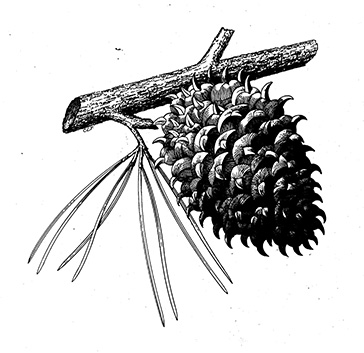
USDA Forest Service
The United States Department of Agriculture Forest Service Collection includes 2,891 drawings (mostly ink), many of which are originals that were produced for the United States Forest Service Bulletin and for Elbert L. Little Jr. (1907–2004), Frank H. Wadsworth (1915–) and Roy O. Woodbury (1913–2002), Common Trees of Puerto Rico and the Virgin Islands (Washington, D.C., USDA Forest Service, 1964–1974, 2 vols.) and Leslie A. Viereck (1930–2008) and Elbert L. Little Jr., Alaska Trees and Shrubs (Washington, D.C., USDA Forest Service, 1972). Artists whose works are represented in this collection include B. A. Batts, Mrs. N. W. Brenizer, Miss Casmody, Carmen M. Diaz, Charles Feddema, Hazal M. Hartman, Annie Elizabeth Hoyle, Leta Hughey, Carol Ann Kanter, Suzanne Foster Manley, D. Olszewski, Juliet C. Patten, Edwin C. Rivera S., H. J. Roena, Jane Roller, W. R. Scholl, Marion D. Shoquist, James M. Shull, Sudworth, C. L. Taylor, E. Villalón, W. F. Wright and several others (M.B.A., BF, Felix, E.L.K., Lino, Pietri, Raúl, F.R.S., GAW, etc.). The collection is curated by the Art Department.
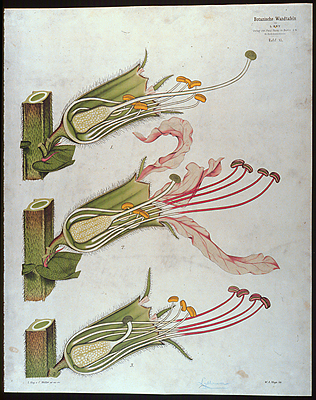
Wall Charts
Hunt Institute's collection contains seven mostly incomplete sets of instructional wall charts from the late 19th and early 20th centuries that were produced in Europe and circulated around the world. Using the less expensive printing process of lithography (some with hand coloring and some printed entirely in color), these large-scale charts featured the characteristics of important plant families (often in magnified detail) and were used in introductory to advanced botany courses. As information became accessible in different formats, this important record of educational presentation fell into disuse. The charts in the Institute's collection were often retrieved from neglect or disposal and donated for preservation. Such charts remain sources of valuable information, especially for students of plant anatomy and systematics and the history of botanical education. The Institute welcomes any additional information about these charts.
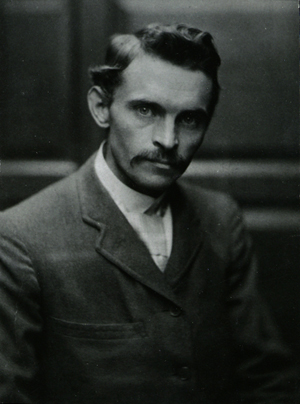
Walpole
The Art Department has 805 mostly pencil and ink drawings and watercolors by Frederick Andrews Walpole (1861–1904) on indefinite loan from the Smithsonian Institution. Walpole's background and the course of his short career are incompletely documented. He was born in Port Douglas, Essex County, New York, 17 January 1861. In 1871 his family moved to Chicago where Frederick became a pupil of an artist named Sloan, possibly Junius R. Sloan (1827–1900), a landscape and portrait artist then working in that city. In 1882 the 21-year-old Walpole left Chicago, making his way by rail and on foot to Southern Oregon to seek out a homestead site. One of his few extant journals covers this period. He arrived at Redding, California, in the Sacramento Valley on 22 March. Learning that the stage fare to Jacksonville, his destination, would be $36.00, he shipped his baggage ahead and set out to cover the last 177 miles of his journey on foot. After exploring the region, he took up a land claim near the present town of Trail in the Crater Lake region, which includes Walpole Creek, named after him. His account book listed all his purchases and living expenses and his occasional receipts from commissioned sketches of towns and settlements.
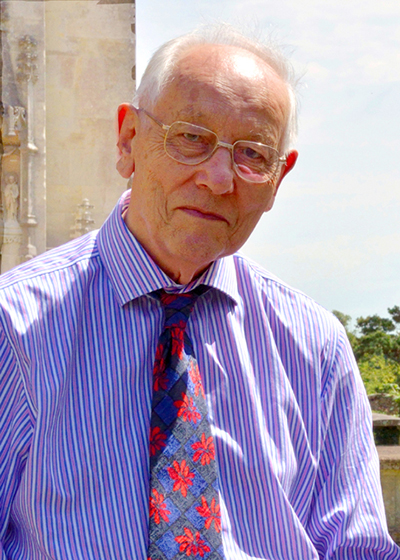
Wilkinson
The Art Department has 247 watercolor paintings by John Wilkinson (1934–). This collection includes the 48 originals for Wilkinson and Alan Mitchell's Collins Handguide to the Trees of Britain and Northern Europe (1978); the 109 originals for Wilkinson and Stefan Buczacki's Mushrooms and Toadstools (1982); and the 57 originals for Wilkinson and Michael Tweedie's Collins Handguide to the Butterflies and Moths of Britain and Europe (1980).
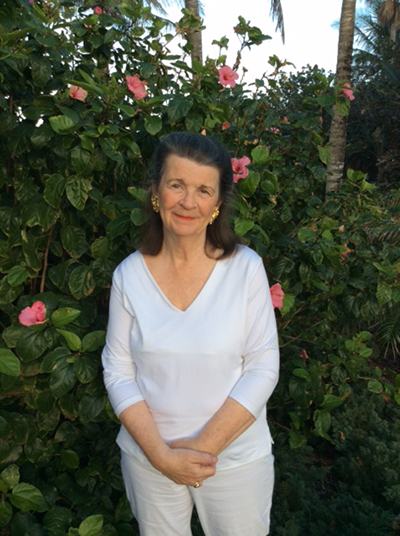
![Enlarge <p>Meadia foliis ..., Dodecatheon ... [<em>Dodecatheon</em> Linnaeus, Primulaceae], watercolor on paper by Andreas Friedrich Happe (1733–1802), 36 × 22 cm, HI Art accession no. 114.</p>](/admin/uploads/hibd-happe-dodecatheon_001.jpg)
